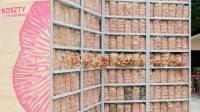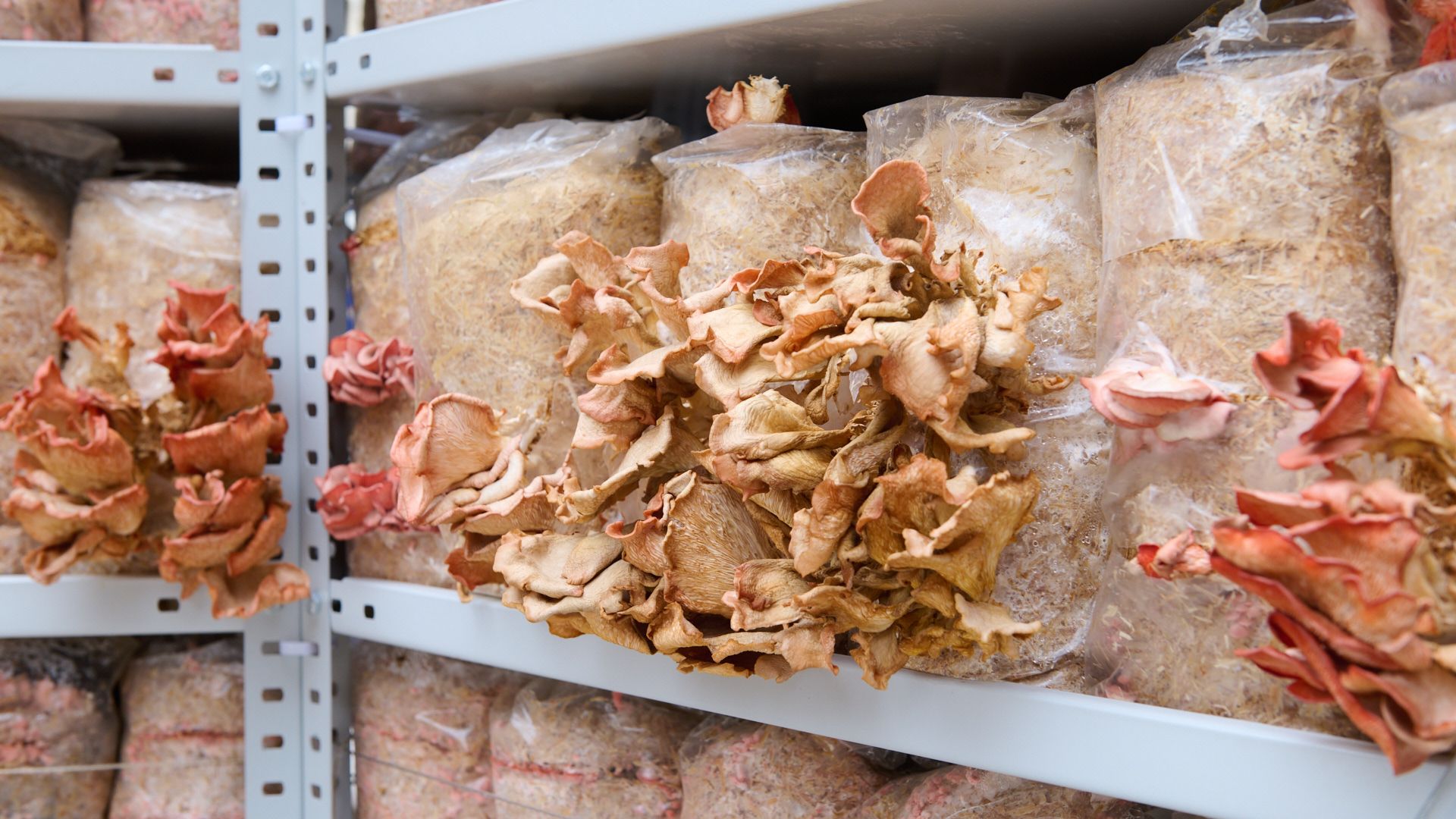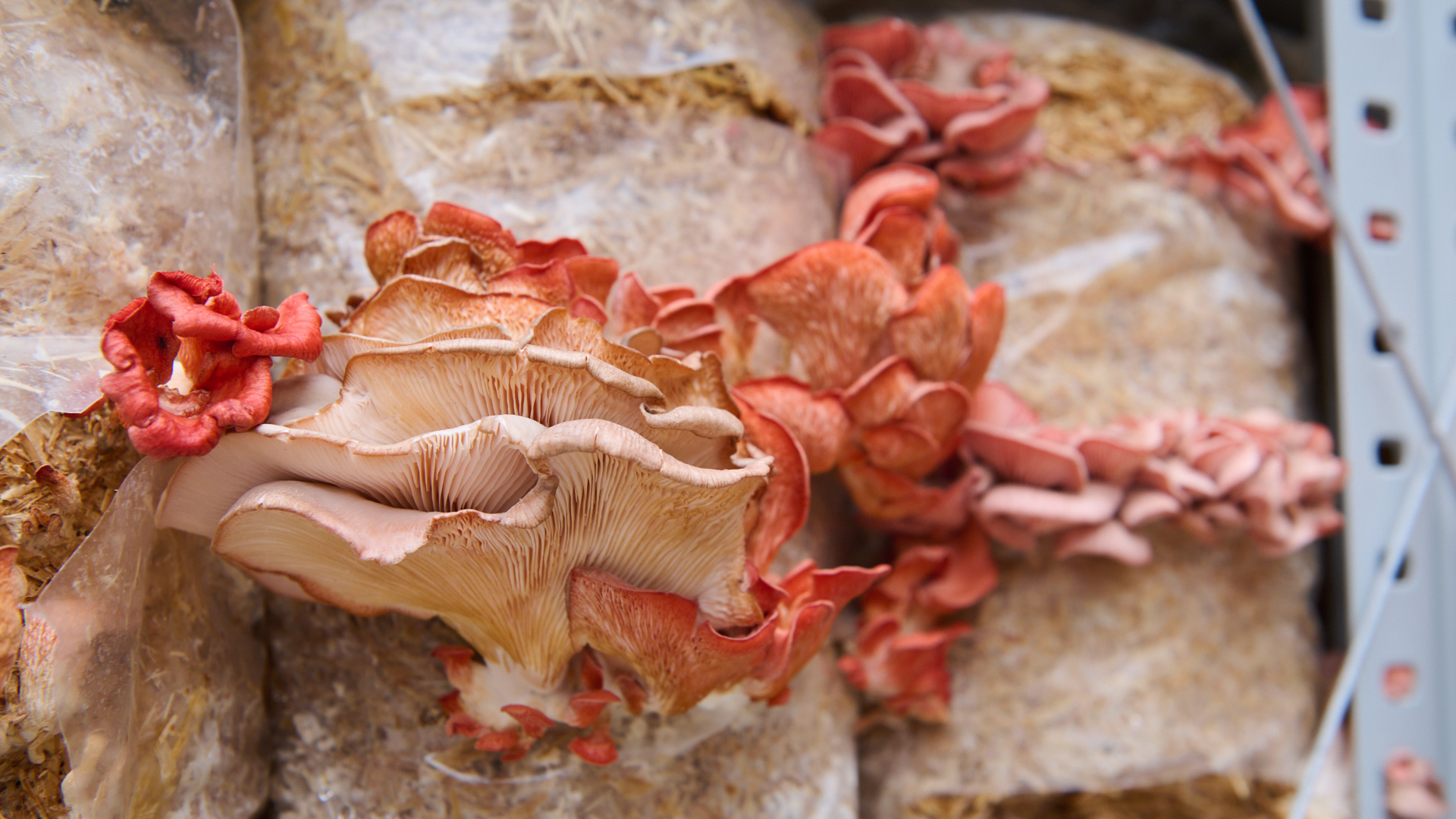The oyster mushroom installation
A new structure has appeared at Plac Pięciu Rogów in Warsaw - the result of work by students of the Faculty of Architecture at the Warsaw University of Technology and the culmination of the KOSZTY :W CENTRUM project.
The installation ROZKOSZT is intended to draw attention to the fact that people are not the only users of urban space and that we often forget, or even deliberately overlook, important parts of the ecosystem.
In the third edition of the :W CENTRUM project, the Warsaw Branch of the Association of Polish Architects and the Faculty of Architecture at the Warsaw University of Technology have decided to look at the costs associated with the use and planning of urban spaces. Debates, panels and workshops on various types of costs: in the city, in architecture and in everyday life are accompanied by an installation. This year the challenge was unique. How to show an issue as complex and extremely non-visual as costs?
- We wondered how our generation actually understands costs - says Mati Niedźwiecka. - The topic of costs in the city is extremely broad and is not limited to the budget. We want to show that costs are not just financial, but also time spent, health or stress resulting from overcrowding. Urban heat islands, light pollution and declining biodiversity are also costs. The costs of our actions are not only borne by people, but also by fauna, flora and fungi.
The students recognised that the topic of costs in an urban context is extremely broad and is not limited to implementation budgets or values expressed in numbers. It is a whole range of issues that affect us because of living in cities. The young architects decided to focus on environmental costs in their project.
- Our installation, called ROZKOSZT, addresses the problem of costs incurred by humans and other living creatures that inhabit cities - explains Jędrzej Olczyk.
To create the project, the students used storage racks that will later go to the Faculty of Architecture, recycled wood courtesy of the Andrewex company, and the main characters - bales of pink oyster mushrooms.
- We decided to create an installation from mushrooms because they offer solutions to many environmental problems - points out Wiktoria Kolaszynska. - Mushrooms have the ability to filter the air and can serve as a food source. They can be used to clean toxins from the soil, and their mycelium provides a lightweight and eco-friendly building material - from mycelium bricks, to mycelium 'polystyrene' for sound and thermal insulation, to mycelium cement created through a biomineralisation process.
The installation will stand in Plac Pięciu Rogów until mid-July and will change - transforming into a huge, vibrant, pink mass.
- We hope that residents and visitors will have the opportunity to observe the growth process of the oyster mushroom from its first days until it becomes a valuable fertiliser after it dies,' Mati Niedźwiecka emphasises. - We hope that visitors will find a moment to reflect on what they are sacrificing by living in the city and what the consequences are for the entire ecosystem and themselves.
The creators of the installation: Emilia Zaborska, Julianna Skuz, Julia Baranowska, Jędrzej Olczyk, Karolina Klukowska, Karolina Kuśpiel, Karolina Wojenka, Mati Niedźwiecka, Olga Mikołajczyk, Sabrina Skusa, Wiktoria Kolaszyńska, Zuzanna Filipek.
Supervisors: Anna Cudny, PhD, and Artur Jerzy Filip, PhD.
Installation partner: Smaki na Boczniaki.
The curatorial team of the entire project :W CENTRUM: Anna Cudny, PHD, arch. Jan Chwedczuk, Artur Jerzy Filip, PhD, arch. Magda Maciąg.
Organisers: the Warsaw Branch of the Association of Polish Architects and the Faculty of Architecture at the Warsaw University of Technology.
Partners of the KOSZTY :W CENTRUM project: City of Warsaw, Cosentino, Reger, Andrewex.










